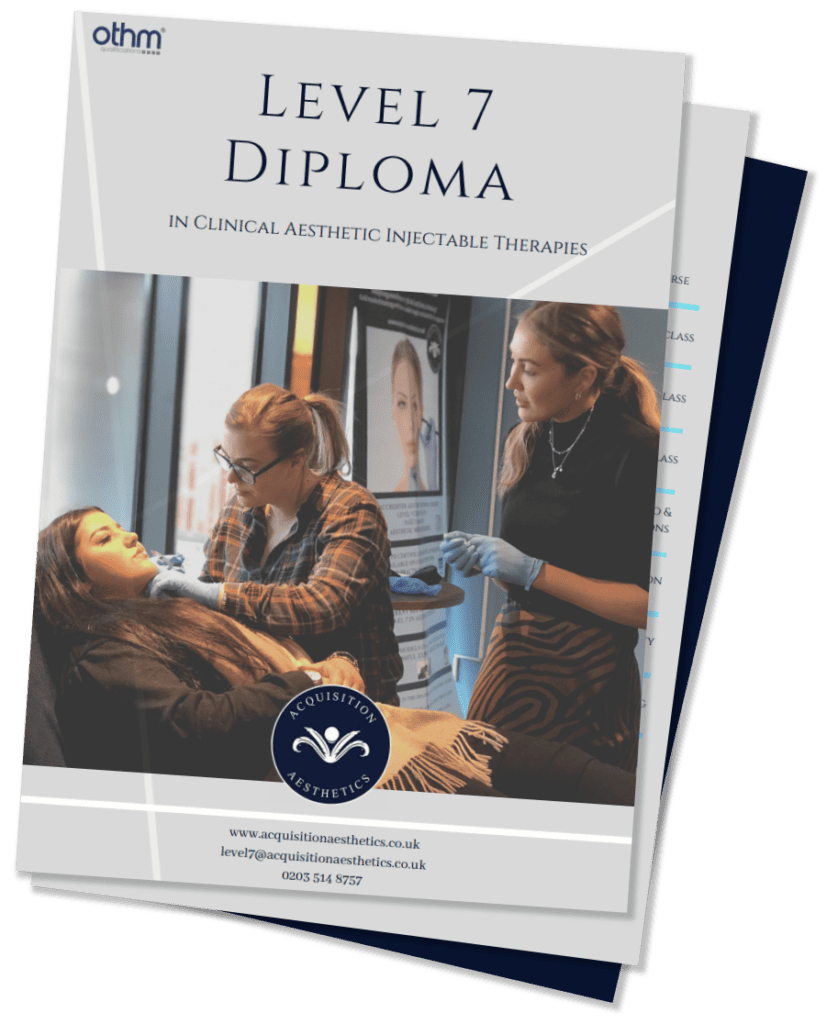For doctors, dentists, and nurses pursuing a career in aesthetic medicine, the main objective of a toxin or filler course is to gain the practical and theoretical knowledge necessary to successfully deliver injectable treatments.
Equally important, though, is developing the ability to carry out a thorough and effective patient consultation. Understanding the exact needs of each patient and tailoring their treatment to provide the results they are looking for is a critical element of being a successful aesthetic practitioner. Maintaining an excellent reputation within the industry is crucial — the ability to put your patients at ease and help them gain a comprehensive understanding of the options available to them will help solidify a high level of trust from those who book with you.
We’ve set out the key steps to follow when carrying out a patient consultation to make it as thorough and effective as possible.
Build a rapport
The initial consultation is pivotal in defining the patient-provider relationship and arguably the most important encounter that you’ll have with your patient. Due to the nature of aesthetic treatments, you must be able to play an emotionally supportive role during the consultation. This is a sensitive topic for many patients, and they’re trusting you to acknowledge their hopes, fears and vulnerabilities.
The best way to build rapport with your client is to ask open questions and take the time to listen to and understand their aesthetic ideals. Employ active listening skills and ask for confirmation from them by repeating their points and concerns and asking them to clarify any potential misunderstandings.
Medical and aesthetic history
While obtaining an aesthetic history from your patient is a vital part of the patient consultation, it’s important to note that this process differs from a traditional medical consultation which would take place between a doctor and patient.
These are the main differences to note between these two types of consultation:
Medical Consultation
- The doctor-patient relationship is typically formal and professional
- Duties of a doctor (to do no harm and to act in the best interests of the patient
- Obtaining a comprehensive medical, drug, social and family history
Aesthetic Consultation
- The patient-practitioner relationship is typically more informal and friendly – the goal should be to build a trusting relationship and good rapport with clients
- Gaining a broad understanding of the results the client aims to achieve
- Although you should strive to do no harm to your clients, you are by no means obligated to provide treatment to them
- The impact upon day-to-day life
- Previous treatments/interventions tried
- Lifestyle (smoking, ETOH, diet, sun exposure, exercise, sleep pattern, occupation)
- Skincare regime
Presenting complaint
To create the ideal treatment plan for your patient, it’s important to understand their presenting complaint and establish concerns and expectations. It’s helpful to determine the patient’s main concern with their appearance, how long it has been bothering them and how they hope this will change with the results of their aesthetic treatment. Asking your client to bring in photos from a time that they were happy with their appearance is also a good way to determine how their appearance may have changed — review these together and discuss the options for achieving desired results.
Determining realistic expectations is also a critical part of this step. Make a point of not over-promising — if your client is fully aware of the facts and risks involved in their treatment, they will review any results positively rather than feeling that they were not as good as expected.
The aesthetic examination
You should consider approaching this part of the patient consultation systematically to ensure every area of concern is covered for the best results. Many aestheticians have different methods, but one of the simplest ways to assess the face is to start from the top-down — look at the forehead region, brow area, eyes, mid-face, lips, then the lower face and neck. Before undertaking the examination, the client should ideally be free of make-up, with their hair swept back off the face.
Some additional tips for a thorough and effective aesthetic examination include:
- Perform the examination under good lighting – ideally from a natural light source
- Use a make-up marker to highlight areas of concern and ensure they are discussed afterwards
- Examine the front and side profile – move around the client or ask them to turn from side to side
- Speak to the client as you go and discuss your findings with the help of a mirror – ask if they agree with your findings or if they have additional concerns that you’ve missed
- Highlight any asymmetry/imperfections that exist prior to treatment – make the client aware that intervention may exaggerate any imperfections
- Examine in a relaxed state and with the client performing various facial expressions
- With consent, take preliminary photographs as a cosmetic record and resource for post-treatment comparison
When carrying out the aesthetic examination, elements to look for include skin type and quality, signs of ageing in relaxed and expressive states, sun damage, and signs of smoking. You can use a mirror to show your client anything you identify and discuss with them in further detail.
The clinical environment
As an aesthetic practitioner, your clinical environment will differ from a medical clinic. It’s important to acknowledge and appreciate these differences and create an environment that is relaxed, calming and inviting.
Aesthetic consultations are almost always held in a private consultation room rather than a noisy, crowded ward. The treatment room itself should be clean, comfortable and quiet, with natural lighting and access to a washbasin and disposal units.
Your client is paying money for a cosmetic service that is often considered a luxury. Ensure that you give them your undivided attention during their time in the clinic, and make an effort to provide them with an experience that they enjoy.
Aftercare and follow up
You should arrange a follow-up appointment for approximately two weeks after treatment for both toxin and dermal filler. This allows sufficient time for the filler to take effect and bruising or other side effects to settle.
During this appointment, you should ensure that the client is satisfied with the results, provide top-up treatment where required and manage any complications that may have occurred. It’s also helpful to take additional photographs for comparison and monitoring purposes.


